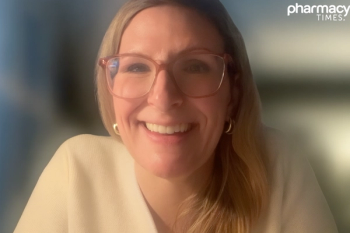
The Opioid Crisis: What Can Pharmacists Do?
Wilson M. Compton, MD, MPE, Deputy Director of the National Institute on Drug Abuse (NIDA) of the National Institutes of Health, addressed pharmacists about their roles in curbing the opioid crisis at the American Association of Colleges of Pharmacy (AACP) annual meeting.
Wilson M. Compton, MD, MPE, Deputy Director of the National Institute on Drug Abuse (NIDA) of the National Institutes of Health, addressed pharmacists about their roles in curbing the opioid crisis at the American Association of Colleges of Pharmacy (AACP) annual meeting.1
Dr. Compton discussed the NIDA’s efforts “to use the power of basic science and apply clinical sciences to address key health issues that our country faces today,” particularly to target the opioid epidemic.
According to most recent data from the CDC, 33,091 deaths in 2015 were caused by prescription and illicit opioid use, and he said that number continued to rise in 2016.2 In his presentation, Dr. Compton noted that research has shown a strong correlation between increasing availability of these medications through prescriptions and the increasing rates of overdose deaths.
Pharmacists, according to Dr. Compton, are poised to help reduce the availability of prescription opioids. Furthermore, pharmacy science represents potential opportunities for new areas of research in opioid use.
NIDA efforts to address the opioid epidemic include 5 priority areas:
- Prevention through advancing the practice of pain management,
- Expanded availability and distribution treatments for opioid overdoses (ie naloxone),
- Expanded access to treatment and recovery services,
- Strengthening public health surveillance, and
- Supporting cutting-edge research.
For pharmacists, being on the “frontlines of coprescribing” positions them to be readily involved in the care of pain patients. Dr. Compton highlighted novel practice strategies specific to pharmacist and pharmacy involvement:
- Expanded roles of pharmacists in protecting the community from diversion,
- Integration with Prescription Drug Monitoring Program (PDMP) data systems,
- Balancing the needs of pain patients while minimizing opioid overexposure,
- The use of partial Rx fills as a potential prevention method,
- Current pilot research on pharmacies as a site for methadone dispensing.
Addressing the role of research, Dr. Compton stated, “Basic science work can lead to more transformative solutions.” Among those solutions include several science-driven methods that could effectively help treat patients with opioid abuse disorder and reduce overdose deaths. These include:
- The use of probuphine, a buprenorphine implant that releases sustained doses for up to 6 months,
- Initiating buprenorphine treatment in emergency departments, which has been shown to improve treatment engagement and reduce illicit opioid use,3
- Extended release naltrexone initiated in criminal justice systems, which reduces relapse rates and overdoses.4
Expanded research on overdose prevention and reversal, treatment of opioid use disorders, and chronic pain management can be pivotal in reducing deaths related to opioid abuse, according to Dr. Compton. With the help of novel strategies and regulatory action, pharmacists and other health care providers can work to manage the needs of their patients while reducing opioid overexposure.
References
- Compton WM. Science plenary: Science=solutions: The opioid crisis in the USA. Presented at: 2017 AACP Annual Meeting. July 15-19, 2017. Nashville.
- Rudd RA, Seth P, David F, et al. Increases in drug and opioid-involved deaths — United States, 2010-2015. MMWR. 2016. 65(50):1445-1454.
- D’Onofrio G, O’Connor P, Pantalon M, et al. Emergency department-initiated buprenorphine/naloxone treatment for opioid dependence. JAMA. 2015. 313(16):1636-1644. Doi: 10.1001/jama.2015.3474
- Lee J, Friedmann P, Kinlock TW, et al. Extended-release naltrexone to prevent opioid relapse in criminal justice offenders. N Engl J Med. 2016. 374:1232-1242. 2016. Doi: 10.1056/NEJMoa1505409
Newsletter
Stay informed on drug updates, treatment guidelines, and pharmacy practice trends—subscribe to Pharmacy Times for weekly clinical insights.





















































































































































































































